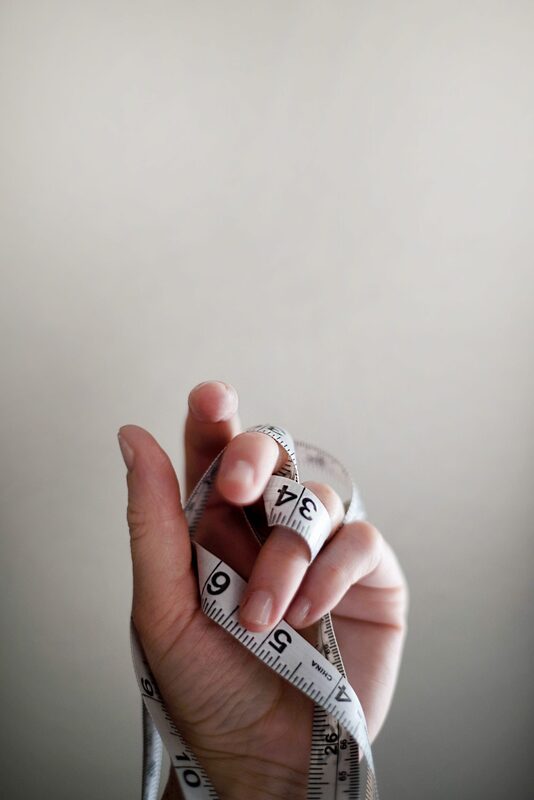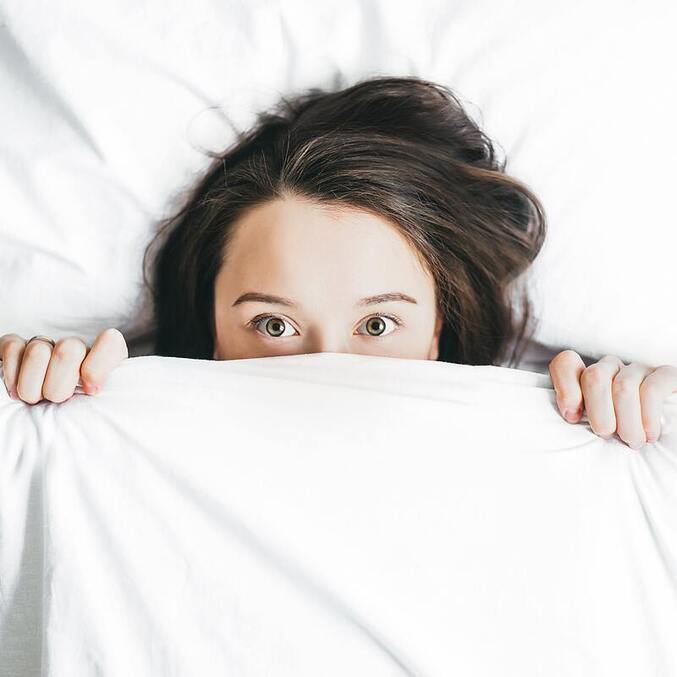|
By Dr. Joti Samra, CEO & Founder of the Psychological Health & Safety (PH&S) Clinic and MyWorkplaceHealth Box Breathing for Stress
Stress is something we all experience to varying degrees, at various points in our day-to-day lives. When stress becomes unmanageable or our ‘fight or flight’ stress response is triggered, breathing techniques can help calm us, and help us make more rational and conscious decisions. Box breathing can work in high-stress situations by returning breathing to its normal rhythm. So, let’s learn how to use Box breathing for stress. Why practice breathing exercises? Practicing simple breathing exercises daily can help to not only manage your overall mood, stress levels and improve your focus – but this practice can help to prepare your body for higher stress situations so that you can preventatively cope in a more effective way. An added bonus is that breathing exercises are easy, can be done almost anywhere and don’t have to take more than five minutes. What is box breathing? Box breathing gets its name because there are four parts – like the 4 sides of a box. One full cycle through the 4 parts takes less than thirty seconds, but it’s recommended to practice for a minimum of three to five minutes. Why does box breathing work? And why is it important? Stress triggers our fight-or-flight response, and when this response is triggered, we tend to shallow breathe. But why is shallow breathing a problem? Shallow breathing can lead to a whole host of physiological symptoms – including, for example, changes in body temperature; lightheadedness or dizziness; or, feelings of derealization or depersonalization (where distance/perception can be altered). These symptoms can mimic anxiety – and so shallow breathing can inadvertently make subjective feelings of anxiety or stress worse. Box Breathing Technique – Here are the steps:
Then, repeat! You may at first find the practice challenging: don’t give up! Instead, reduce the count to three seconds and continue to practice. Once you’ve become more experienced with this practice you may be able to increase the count to six seconds or more, but start small. By Dr. Joti Samra, CEO & Founder of the Psychological Health & Safety (PH&S) Clinic and MyWorkplaceHealth Why Practice Mindfulness – “I’m not good at it but I practice it anyway” Have you heard about mindfulness but are skeptical? Maybe you imagine mindfulness as meditation. You know the image we conjure, a person sitting cross-legged on the floor saying ‘ohm’, completely still and not thinking about anything. That’s not what mindfulness is! So, let’s talk about mindfulness, why I feel like I’m not very good at it but why I practice it anyway. What is mindfulness? Mindfulness is the practice of being present in the moment in order to prevent us from ruminating about the past or worrying about the future. It’s not an attempt to completely remove our thoughts but be aware of the things happening in the current moment. Think- being with ourselves and actually feeling our feelings. Why mindfulness is hard? One of the reasons I think mindfulness is hard is because we generally have an unrealistic expectation of what mindfulness is. Also, most people (myself included) don’t want to be bad at things and mindfulness is a skill you need to practice. I was first encouraged to engage in mindfulness practice when I started dialectic behavioural therapy (DBT). I’d heard of it before (at the time I was a psychology student in university) but I was skeptical about it being effective. The first exercise I was encouraged to do was a breathing exercise (which is very common with mindfulness practices, and I will talk a little bit more about later). The first handful of times I tried it, in many different variations, it was unsuccessful. Why? Because I was so fixated on being good at it that I missed the entire point of the practice. Rather than simply paying attention to my breath I was worried I was failing at it because I couldn’t breathe in or out for the total count they suggested. So, instead of being present I was focused on thoughts like ‘why am I so bad at this?’ and it actually made me feel more anxious. The first time I tried mindfulness was 2015, I believe, which is five years ago. I still practice mindfulness now and to be honest I don’t feel like I’m that much better at it. Why Practice Mindfulness Anxiety. I am an anxious person. I continually worry about things that’ve happened in the past, ruminating about small embarrassing moments and taking things people say out of context that convinces me they obviously hate me (they don’t!). On top of that, I spend an equal amount of time worrying about the things that could happen in the future. For me, something like simply test anxiety can turn into spirally thoughts. For example, that I’ll never graduate, or get a decent job, so I might as well quit now as my life is practically already over. Even though past evidence suggests this is untrue and will continue to be untrue. At the beginning of my time in therapy, I didn’t realize how much this prevented me from truly engaging with the present. Mindfulness works for anxiety. Despite all the research that says mindfulness works, I swore it didn’t for a very long time. Unfortunately, it just took a lot of practice and finding a way to engage with mindfulness in a way that made sense for me. (Not every way of practicing mindfulness is going to work for everyone). When we’re anxious, regardless of what we are anxious about, we get into our fight-flight-or-freeze response (our stress response). Mindfulness helps to break us out of that. One of the things we likely notice first when we start to feel anxious is our increased heart rate, engaging in a mindful practice helps to control our breathing which reduces our heart rate. What Mindfulness Practices Work for Me THE BASIC My go-to mindfulness practice is very basic. I use it when I notice myself getting fixated on particular thoughts or my thoughts are in an escalating feedback loop. I make sure to put away all distractions like my phone and my laptop. Sit in a comfortable position and close my eyes (I get too distracted by things in my environment but closing your eyes is not essential). Then pay attention to my breathing. I do not try to change my breathing, I just pay attention to it. While doing, it’s important to notice when thoughts enter your mind but let them go without judgement. For me, it’s helpful to say (or think) something like ‘this is just a thought I’m having’. When my fight or flight is engaged, and I am feeling less in control of my anxiety, I generally require a more focused mindfulness practice such as focused breathing or body scan. This gives my brain a little bit more to focus on which can sometimes help. FOCUSED BREATHING A focused breathing exercise requires a person to pay more attention to their breath as well as controlling it. One of the ways to do this is four stage breathing. The goal is to make each full breath last at least 10 seconds – 5 seconds on the inhale, and 5 seconds on the exhale. You do so by breaking each inhale and exhale into two parts: On the first inhale, fill up most of your lungs; on the second inhale, think about ‘topping up’ your lungs with air. On the first exhale, push out most of the air, and on the second exhale, think about fully emptying your lungs. This works better for me than some breathing techniques because there is less focus on counting which always throws me off and makes me feel like I’m failing. BODY SCAN I start in the same position as my basic mindfulness practice but ideally sitting on a comfortable chair with my feet on the floor. Then, while taking slow controlling breaths, I start at my feet and pay attention to all the sensations in each part of my body and then consciously think. For example, I think about how my feet feel inside my socks, how they feel pressed up against the floor and I may even wiggle them. Then move up my legs to my calves then my thighs, etc. Final Thoughts These are by no means the only ways to practice mindfulness, but they’re a decent place to start. Just remember that mindfulness works, but it takes practice. Don’t get discouraged; find something that works for you and try practicing it every day, not just when you’re feeling anxious. By Dr. Joti Samra, CEO & Founder of the Psychological Health & Safety (PH&S) Clinic and MyWorkplaceHealth The question:
I have an unexplained fear of flying. I’ve never been on a plane – never want to – but now my daughter moved to the States, and I would love to go visit without driving for 10 hours. How can I get over it – or can I? The answer: A fear of flying is one of the most common phobias. By definition, a phobia is an irrational fear of a thing, place or situation that is out of proportion to the actual danger posed. Although phobias sometimes begin following a fear-inducing situation (such as experiencing a very turbulent flight, for example), often people have no recollection of why or how their fear was created. And, not uncommonly, phobias can develop even when a person has never had an experience related to that which they are fearing, such as in your situation. Anxiety disorders – and phobias in particular – are highly treatable. The most effective treatment for phobias is cognitive behavioural therapy, which involves two key elements: 1) challenging the irrational, fear-inducing thoughts associated with the feared stimulus and 2) behavioural strategies involving an approach called “systematic desensitization”. Very simply, phobias persist if we continue to (without any persuasive evidence) think that a particular stimulus is fear-inducing. There are two common faulty patterns of thinking that individuals engage in that feed a phobia: probability overestimation and catastrophic thinking. Individuals consistently overestimate the probability of the worst negative outcome occurring. For example, you likely (without knowing it) are overestimating the likelihood that, for example, the worst imagined outcome of a plane crashing would occur. Obtain accurate statistics on imagined worst case outcomes. Then, be aware of the automatic phobic thoughts you are having, and replace them with more accurate thoughts. So, if you have the thought “So many things could go wrong; the plane might crash and I could die”, replace it with the more accurate and valid thought “Although plane crashes can occur, they are very rare. The likelihood of a plane crashing is extremely low, much lower than me dying driving my car, and I don’t avoid that”. Individuals also tend to engage in catastrophic, exaggerated thoughts about outcomes. Instead of thinking things like “I could never, ever get on a plane – it would absolutely terrify me and I would lose it”, trying replacing the thought with something more accurate like “Although it may feel extremely difficult I – like tens of thousands of people a day – could get on a plane. I may feel extremely anxious but I would be able to eventually get through it. With practice and time it will get easier”. There is an important behavioural component to overcoming phobias. Systematic desensitization involves two components: learning relaxation strategies and implementing them as one gradually exposes themselves to the source of their phobia. So in your case: thinking about flying, then watching a plane on TV, talking about you on a plane, going to an airport, etc. You systematically expose yourself to situations that elicit more and more fear while using relaxation strategies throughout. Working with a psychologist who specializes in cognitive-behavioural therapy for anxiety disorders/phobias can be tremendously helpful, and there is good evidence that significant benefit will be obtained following 8-16 sessions of treatment. So – yes, with some dedicated effort you will be able to get over your fear. Excerpted from Dr. Joti Samra’s “Ask the Psychologist” weekly column in The Globe and Mail. By Dr. Joti Samra, CEO & Founder of the Psychological Health & Safety (PH&S) Clinic and MyWorkplaceHealth Breathing Exercises to Manage Stress
Breathing exercises can be very helpful tools for managing symptoms when our “fight-flight-freeze” stress response is triggered. And the great thing about breathing techniques is they’re easy – once we master the steps. One of my go-to breathing exercises, which we teach to many clients in our clinical practice group, is “four stage breathing”. This is a variant of the more common box breathing approach. Both can be equally effective approaches – it’s just about finding a style that works for you! What is Four Stage Breathing? Four stage breathing is a type of breathing technique that slows down our breathing actively and intentionally. It’s called four stage breathing as there are – surprise! – four stages to each full breath: two parts to the inhale, and two parts to the exhale. Why do breathing exercises work? And why is it important? Stress triggers our “fight-flight-freeze” response and when this response is triggered, we tend to shallow breathe. So why is shallow breathing a problem? Shallow breathing can lead to a whole host of physiological symptoms – including for example, changes in body temperature, lightheadedness or dizziness, or feelings of derealization or depersonalization (where distance/perception can be altered). These symptoms can mimic anxiety – and so shallow breathing can inadvertently make subjective feelings of anxiety or stress worse. Four stage breathing helps anxiety by providing control over the physiological symptoms – and this, in turn, helps calm the emotional symptoms. The Technique: How to do Four Stage Breathing First, ensure you are breathing in through your nose and out through your mouth. This naturally slows down the pace of our breathing. Second, make each full breath last at least 10 seconds – 5 seconds on the inhale, and 5 seconds on the exhale. Break each inhale and exhale into two parts: On the first inhale, fill up most of your lungs; on the second inhale, think about ‘topping up’ your lungs with air. On the first exhale, push out most of the air, and on the second exhale think about fully emptying your lungs. This helps to maximize our lung capacity. Repeat this cycle for 3-5 minutes. When you are first learning four stage breathing, it’s important to practice when you are already relatively calm or feeling low stress – this can help build mastery. Then, over time, use it as a tool when you feel your stress or anxiety increasing. How I incorporate Four Stage Breathing into my life
There is a very strong evidence-base on the benefits of breathing to reduce the frequency and intensity of the physiological symptoms associated with stress and anxiety-related. I encourage you to try four stage breathing regularly for a week – just a handful of times a day, for just a handful of minutes at a time and see how you feel. Remember: when we are experiencing stress, the best thing we can do is focus on the things within our domain of control and breathing is one of them. By Marissa Bowsfield, M.A, CBT Therapist and member of the Canadian Sex Research Forum Negative Body Image is Common
With the summer months upon us and the warmer weather beckoning us outside, many of us may have anxious thoughts and worries about our bodies. Not about our body’s important functions – but rather how it looks. We may have thoughts like, “I’m not in good enough shape” or “I don’t want people to see my stomach at the beach” or even, “I’m disgusting”. Body image is a psychological characteristic that reflects an individual’s satisfaction with their body and the emotions that are experienced in relation to their body. We all have a sense of body image and it can range from very negative to very positive. Unfortunately, negative body image is widespread and does not discriminate. Although negative body image has historically been considered a “women’s” issue, research conducted in more recent years suggests that women, men, and non-binary or transgender individuals all experience negative body image. Furthermore, people of all different shapes, sizes, and body compositions can experience significant issues with body image. Generally, negative body image is theorized to arise from narrow, socially prescribed body ideals for women (e.g., historically this has been the “thin ideal” and more recently it is becoming more of a “fit ideal” or “toned ideal”, although thinness is still privileged) and men (e.g., muscular, lean). When people endorse these ideals and compare their own bodies against them, they are likely to experience a relatively negative body image. Negative Body Image Elicits Anxiety Anticipating summer and seeing all of those “Get Your Summer Body!” headlines popping up may increase our dissatisfaction and worry about our bodies. They cause us to focus on, and evaluate, our physical appearance against unrealistic body ideals. Indeed, people tend to be the most worried about their bodies, and experience associated negative emotions, like shame, in situations wherein the body is particularly salient or is “on display”. Given this reality, there are many situations that have absolutely nothing to do with summer or swimsuits that may cause people to experience anxious thoughts and negative emotions about their bodies. A prime example that likely comes to mind is partnered sexual activity, which is obviously not just a summer activity! Sexual activity is inherently focused on the body and requires a certain level of body exposure to another person or persons. Thus, it may trigger very high levels of anxiety, especially for people who experience negative body image. What might this mean for our sexual relationships? Body Image and Sexual Relationships Recent research suggests that people who have a negative body image may be especially anxious during sex and this anxiety may manifest in different ways to interfere with their sexual enjoyment. First, they may find that their mind is preoccupied with thoughts about their body and what their partner might think of it during sex – so much so, that it is difficult to enjoy the experience. Second, people who have a negative body image may want to keep certain pieces of clothing on during sex or only have sex with the lights off, they may not want their partner to touch them in specific places, or they may be inclined to avoid sex altogether. These strategies are designed to manage the anxiety, but instead, they serve to prevent people from fully enjoying sexual activity by interfering with sexual arousal, impeding orgasm, or simply taking focus away from the pleasurable sensations that occur during sex. Importantly, the anxiety that people experience during sex as a result of their negative body image also has negative consequences for partners. If we think about how anxiety can manifest during sex – either in preoccupied thoughts about the body, behaviours to limit body exposure, or both – we can imagine how partners may be affected. If an individual is unwilling to engage in certain behaviours or to allow a partner to see their body (with the lights on!) during sex, or they simply seem distracted, the partner may have a rather unfulfilling sexual experience. Final Thoughts and Tips for Improving Body Image This may seem like a discouraging situation. However, we can look at it another way: What might be relatively simple and effective ways for people to improve their own and their partner’s sex lives? Well, good first steps are to work to improve body image, to be less critical of ourselves and our partners, and to manage anxiety during sex (e.g., using mindfulness techniques). Improving these areas may lead to more pleasurable, fun, and satisfying sexual experiences where the focus is on sensation, intimacy, and mutual enjoyment, rather than on worry over physical imperfections. Some tips for improving body image include:
Marissa Bowsfield, M.A. is a senior Doctoral Student in the Clinical Psychology Program at Simon Fraser University (SFU) where she is training to become a Registered Psychologist. She completed her B.A. (Hons.) at SFU in 2014 and her M.A. (Clinical Psychology) in 2017, and received the Canadian Psychological Association's Award for Academic Excellence. She is also a recipient of the Social Sciences and Humanities Research Council of Canada’s Graduate Scholarship and conducts research on intimate relationships and human sexuality, including issues around body image in sexual relationships. Reach out through our contact page for more information or to book an appointment. By Dr. Melanie Badali, R. Psych. A new year is upon us once again and people are talking about New Year’s resolutions. Some people get excited about the beauty of a new beginning, while others can’t be bothered because they’ve been burned in the past. Either way, a new year is a good time for a fresh perspective. Here, Dr. Melanie Badali will discuss gaining a new perspective on anxiety this year.
The definition of a resolution is, “A firm decision to do or not to do something.” This year, I’ve decided to focus on opportunities and face my fears. It seems obvious that given the choice between focusing on the opportunities versus focusing on the threats in life, most people will choose to focus on the opportunities. Unfortunately, it’s harder to do than it may sound. When we feel anxious, our thoughts may automatically shift to focus on potential threats. When we pay attention to potential threats, we may feel more anxious. Do you see how we can get stuck in a spiral of anxiety? New Perspective on Anxiety: How Do We Manage the Spiral of Anxiety? The trick is in the do. When our anxious thoughts and emotions dictate our actions, managing our anxiety can become harder. As uncomfortable as it may seem, sometimes we have to act the opposite of how we feel. Paradoxically, the things we may do to decrease our anxiety in the short term can fuel our anxiety, making it worse for us in the long run (for example, avoiding a difficult conversation in the short-term will likely only increase anxiety in the long-term). By facing our fears and doing what scares us, we can learn that the fear is unfounded or that we are able to cope with the feared outcome. How do we gain this new perspective on anxiety and make a change in our lives? The key is to figure out if we’re doing or avoiding something out of preference (we don’t actually like it), or if we’re avoiding it because we feel anxious. Ask yourself the following question: If I knew for sure (insert fear here) _________________________, was not going to happen, what would I do? For example:
Are you missing out on opportunities? To help you identify the situations that you typically avoid, here’s an exercise from the Anxiety Canada website. Try to come up with as many answers as possible to the following questions: If you woke up tomorrow morning and all your anxiety had magically disappeared;
Finish the following sentences:
Anxiety can feel very uncomfortable, so it’s not unusual to want that feeling to stop. Remember anxiety is normal, it isn’t dangerous, it can actually be helpful, and it won’t last forever. Knowing this can help you act bravely. Brave is a new perspective on anxiety. Dr. Melanie has given some extra tips on how to enter the new year bravely, read that blog post here. PERSPECTIVE ON ANXIETY: 5 FACTS
“Anxiety is a problem when your body reacts as if there is danger when there is no real danger. It’s like having an overly sensitive smoke alarm system in your body!” By Dr. Joti Samra, CEO & Founder of the Psychological Health & Safety (PH&S) Clinic and MyWorkplaceHealth Do you lay in bed tossing and turning? Do you check the clock and calculate the number of hours of sleep you’d get if you fell asleep right now? Or think about your list of to-do’s for tomorrow? If so, you’re not alone. So let’s talk about how to manage the negative effects of anxiety on sleep. Anxiety, and associated worry thoughts, have a significant impact on our ability to sleep. And with the high demand world we live in, it’s no wonder that so many people struggle with sleep problems. The tough thing about anxiety and sleep is that it can be difficult to know which comes first. Do we not sleep because we are anxious? Or are we anxious because we can’t sleep? It’s likely both. Stress and anxiety can cause or worsen sleep difficulties and lack of sleep can make us anxious. So, how can we manage our worry thoughts to help us get better sleep? https://youtu.be/8KEbCRXZUqE How to Get Better SleepWorry and anxiety are a normal part of life, but also among the strongest factors that impact sleep. If you are finding worries are preventing you from sleeping, here are some tips to help you sleep better:
Final ThoughtsStill not able to effectively manage the negative effects of worry on your sleep? Cognitive-behavioural treatment (CBT) is the most effective treatment for sleep problems, as well as associated mood and worry or anxiety issues. If worry thoughts persist and continue to have a significant impact on sleep, consider seeing a registered mental health provider. It may also be helpful to talk to your family physician to ensure there are no other underlying issues that may be impacting your sleep.
https://youtu.be/CIOhCas5KUc |
PH&S ClinicEnhancing psychological health, wellness and resilience Archives
July 2024
Mental Health
All
|








 RSS Feed
RSS Feed

